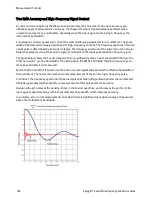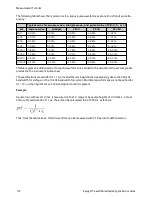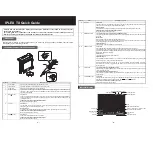
Temperature Measurements
Temperature measurements require a temperature transducer probe. The supported probes are 2-wire
and 4-wire RTDs, 2-wire and 4-wire thermistors (5 k 44007 type, see Thermistor Requirements below),
and, for the 34465A/70A only, type E, J, K, N, R, or T thermocouples.
Probe Type Choice
RTD's provide very accurate, highly linear relationships between resistance and temperature, over a range
of roughly –200 to 500 °C. There is very little conversion complexity for an RTD because it is so intrinsically
linear. The multimeter provides measurement for the IEC751 standard RTD, which has a sensitivity of
0.385%/°C.
Thermistors consist of semiconductor materials, and provide roughly ten times the sensitivity of the RTD.
Because they are semiconductors, their temperature range is more limited, commonly to –80 to 150 °C.
Thermistors have highly non–linear temperature–resistance relationships; therefore their conversion
algorithms are more complex. The True
volt
Series multimeters use the standard Hart–Steinhart Approx-
imation to provide accurate conversions, with a typical resolution of .08 °C.
Thermistor Requirements
The DMM converts the measured thermistor resistance to temperature using the Steinhart-Hart ther-
mistor equation:
1⁄T = A + B (Ln(R)) + C (Ln(R))
3
Where:
A, B, and C are constants provided by the thermistor manufacturer and derived from three
temperature test points.
R = Thermistor resistance in Ω.
T = Temperature in degrees K.
Important:
Use only a 5 kΩ 44007-type thermistor. This type thermistor has constants of A = 1.285e-3, B
= 2.362e-4, C = 9.285e-8. Using an incorrect type of thermistor can result in errors greater than 20 °C for
a temperature being measured of 100 °C.
For a detailed tutorial on temperature measurements, refer to Keysight Application Note 290
Practical
Temperature Measurements
available at
2-Wire vs. 4-Wire Measurements
As with resistance measurements, four-wire temperature measurements are more accurate, because
errors due to lead wire resistance are completely eliminated. Alternately, you can use the multimeter’s
Null function to remove the test lead resistance from the measurement (see NULL Reading below).
Measurement Tutorial
172
Keysight True
volt
Series Operating and Service Guide
















































